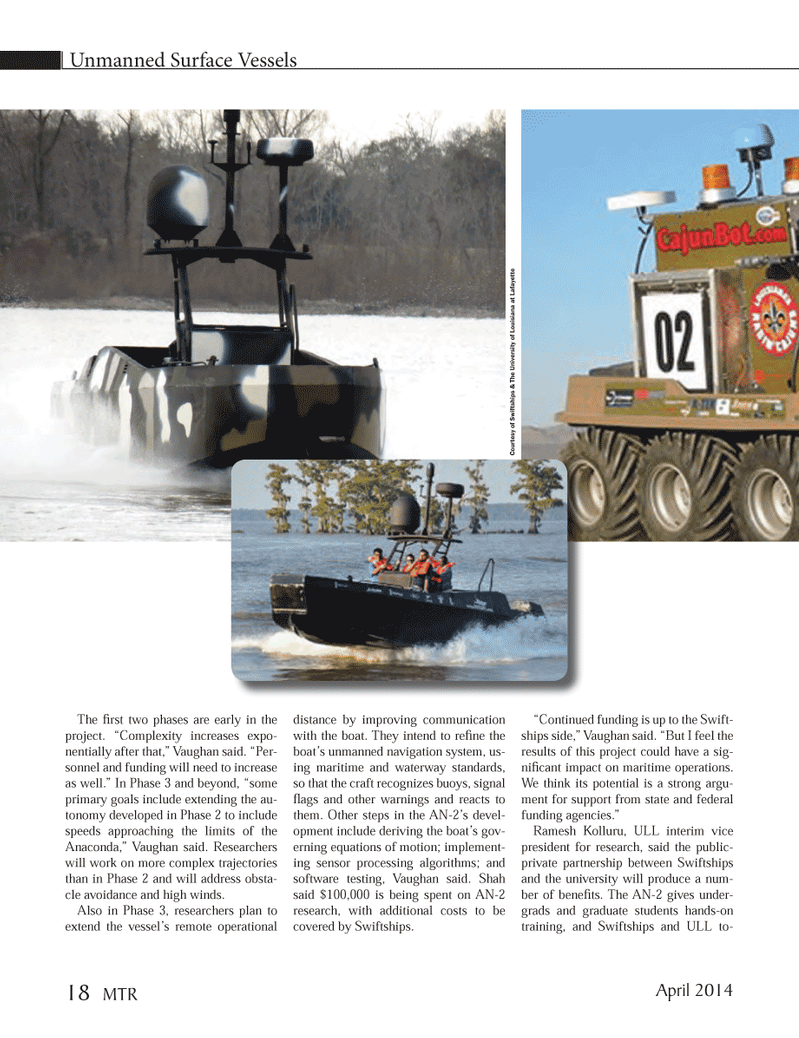
Page 18: of Marine Technology Magazine (April 2014)
Offshore Energy
Read this page in Pdf, Flash or Html5 edition of April 2014 Marine Technology Magazine
Unmanned Surface Vessels
The fi rst two phases are early in the project. “Complexity increases expo- nentially after that,” Vaughan said. “Per- sonnel and funding will need to increase as well.” In Phase 3 and beyond, “some primary goals include extending the au- tonomy developed in Phase 2 to include speeds approaching the limits of the
Anaconda,” Vaughan said. Researchers will work on more complex trajectories than in Phase 2 and will address obsta- cle avoidance and high winds.
Also in Phase 3, researchers plan to extend the vessel’s remote operational distance by improving communication with the boat. They intend to refi ne the boat’s unmanned navigation system, us- ing maritime and waterway standards, so that the craft recognizes buoys, signal fl ags and other warnings and reacts to them. Other steps in the AN-2’s devel- opment include deriving the boat’s gov- erning equations of motion; implement- ing sensor processing algorithms; and software testing, Vaughan said. Shah said $100,000 is being spent on AN-2 research, with additional costs to be covered by Swiftships. “Continued funding is up to the Swift- ships side,” Vaughan said. “But I feel the results of this project could have a sig- nifi cant impact on maritime operations.
We think its potential is a strong argu- ment for support from state and federal funding agencies.”
Ramesh Kolluru, ULL interim vice president for research, said the public- private partnership between Swiftships and the university will produce a num- ber of benefi ts. The AN-2 gives under- grads and graduate students hands-on training, and Swiftships and ULL to-
Cour tesy of Swif tships & The Univ er sity of Louisiana at Lafa y ette 18 MTR
April 2014
MTR #3 (18-33).indd 18 4/9/2014 9:14:01 AM

 17
17

 19
19
